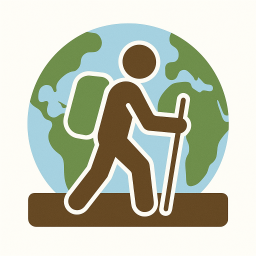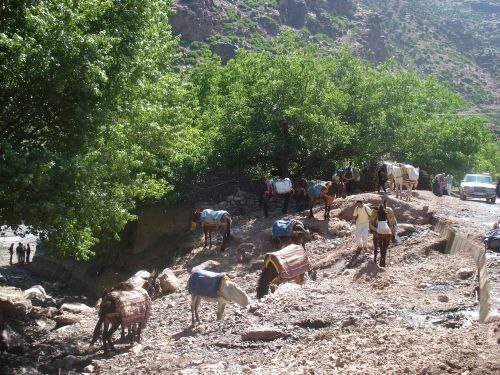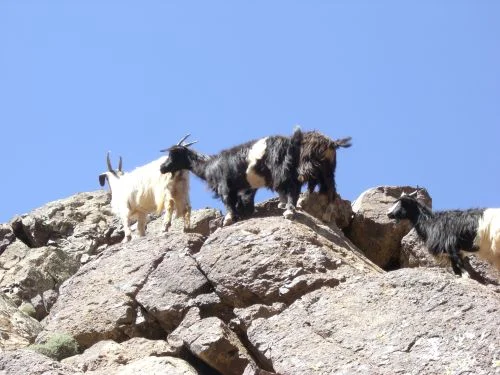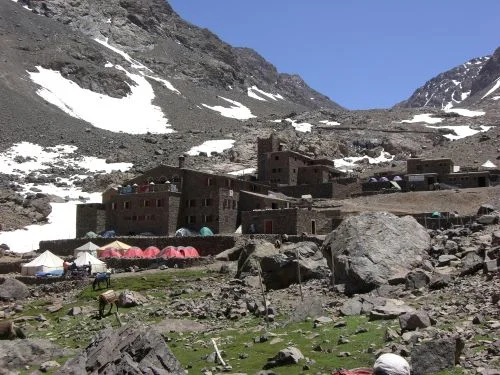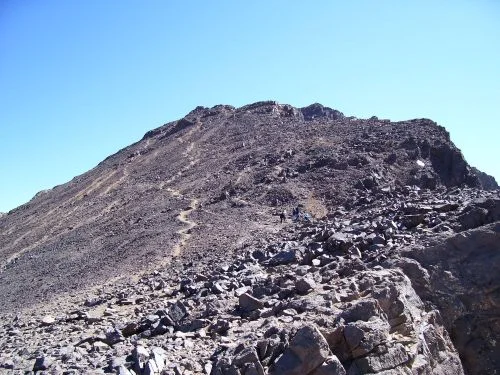
Climbing Mount Toubkal: an Essential Trek in Morocco
The ascent of Mount Toubkal, the highest point in North Africa at 4,167 meters, is a must-do trek for every hiking enthusiast. Beyond being a natural frontier between the lush valleys of the north and the arid expanses of the south, with the first foothills of the Sahara, Toubkal is also one of the rare summits at this altitude that can be reached on foot without the need for technical mountaineering skills. Climbing it is far more than a physical challenge: it is an adventure deep in the High Atlas Mountains, where breathtaking landscapes, Berber culture, altitude acclimatization, effort and wonder all blend together. For those dreaming of standing on its summit, here is some key information to help you prepare your trek.
Located only a few hours from Marrakech, Mount Toubkal offers a stunning mix of natural beauty and varied landscapes: deep valleys, jagged ridges, red rocks, and snow-capped peaks depending on the season. This summit, lying within the protected Toubkal National Park, is an emblematic goal for both novice hikers and experienced mountaineers. Accessibility through villages like Imlil creates a perfect balance between comfort and immersion. The reward: a unique panorama across the High Atlas, sometimes stretching as far as the plains and even the desert on clear days.
The best season to plan a Toubkal trek is between May and October. During these months, the days are longer, the weather is more stable, and the refuges are easier to access. June to September is the busiest period. To avoid the crowds, aim for late spring or early autumn (May, June or September): nights will be colder, but conditions generally remain good. In winter, the ascent requires full technical preparation: snow, ice, and alpine gear become essential.
Although the climb does not require technical mountaineering equipment in summer, the hike is still demanding. There is no official minimum fitness level to attempt Toubkal, but being in good shape is crucial. Training with uphill hikes, strengthening muscles, knees and ankles, and practicing long walks with a loaded backpack are all excellent preparation. Getting used to varied terrain — rocky paths, steep slopes, sometimes slippery trails — is also important. Don’t underestimate the effect of altitude: if possible, plan hikes at elevation beforehand, and try sleeping above 2,500 meters to help your body adjust to thinner air.
Most trekkers begin their journey in Marrakech, the international entry point, then reach the valley of Imlil, the classic starting village. Imlil can be reached by taxi or minivan from Marrakech, and from there it’s either on foot or by mule to the refuge. Refuges like the Toubkal Refuge (around 3,200 – 3,300 m), managed by the French Alpine Club, serve as the base camp for the final push. Spending at least one night at the refuge is strongly recommended to set off early in the morning towards the summit. The return is often along the same trail, though some routes form loops.
To the question “How many days does it take to climb Mount Toubkal?” the standard answer is usually three days, with the first day devoted to the transfer from Marrakech to Imlil and an overnight stay in a lodge or refuge, the second day spent trekking up to the Toubkal Refuge, and the third day reserved for the final summit ascent followed by the descent. For those who prefer to take their time, there are 5-day itineraries that cross secondary passes or Berber villages, allowing for better acclimatization, more encounters, and a deeper cultural experience. Many travel agencies in Morocco offer these options in their trekking packages. Usually, you’ll also benefit from the support of a local guide, which brings many advantages: knowledge of the terrain, added safety, smoother acclimatization, and logistical help with mules and supplies. Berber guides are often the most experienced in leading these treks.
On summit day, the climb usually starts very early, often between 2 and 3 a.m., to make the most of the stable snow conditions and avoid the stronger winds later in the day. The summit is typically reached by late morning or around noon, depending on the pace. While not technically difficult, the altitude makes the final push physically demanding. At 4,167 meters, the lack of oxygen becomes significant. The risk of Acute Mountain Sickness (AMS) is real. To prevent it, ascend gradually, stay hydrated, avoid alcohol, eat light, and be attentive to warning signs such as headaches, nausea, or severe fatigue. If these symptoms appear, the only safe choice is to descend. As you climb higher, the terrain becomes harsher: rocky paths, steep scree slopes, and sometimes snow or ice depending on the season. Weather conditions can shift rapidly — fog, strong winds, or freezing nights are not uncommon. Trails can also be damaged after heavy rains. It’s wise to allow a buffer day or two for bad weather rather than taking unnecessary risks.
Proper gear is essential. Sturdy, waterproof hiking boots with good grip are a must. A warm down jacket, windbreaker, gloves, beanie, quality sunglasses, sunscreen, and a headlamp should all fit into a 25–35 liter backpack. Trekking poles are highly recommended. For hydration, plan on drinking 2 to 3 liters per day, plus carry purification tablets if you refill along the way. High-energy snacks like bars, dried fruit, and chocolate are great fuel. To sleep at the refuge, bring a sleeping bag suitable for cold mountain nights.
Climbing Mount Toubkal will likely remain one of your most memorable trekking experiences if you prepare properly and choose the right conditions. It combines physical challenge with cultural immersion, breathtaking views, and the satisfaction of standing on the roof of North Africa.
